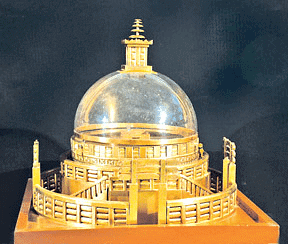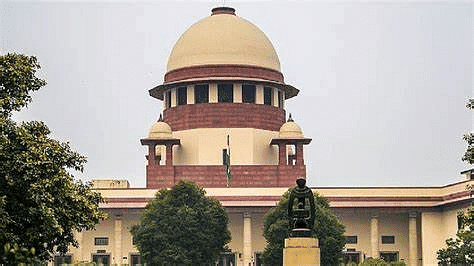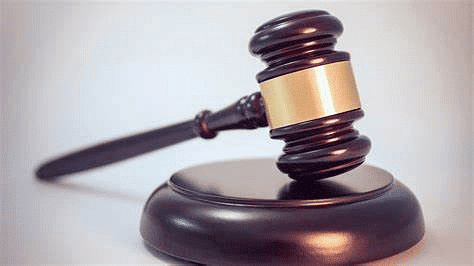UPSC Daily Current Affairs- 21st February 2024 | Current Affairs & Hindu Analysis: Daily, Weekly & Monthly PDF Download
| Table of contents |

|
| GS-I |

|
| Kapilvastu Relics |

|
| Shompen Tribe |

|
| GS-II |

|
| IBSA Fund |

|
| Raisina Dialogue |

|
| Legal Conundrum: What constitutes a Money Bill? |

|
| Mayor’s Election |

|
| Judicial clarity on free speech |

|
GS-I
Kapilvastu Relics
Subject: History & Culture

Why in News?
Four bone fragments of Lord Buddha, also known as Kapilvastu Relics, presently kept in the National Museum will be taken to Thailand after about 30 years.
About Kapilvastu Relics:
- The relics were excavated from Piprahwa in the Siddharthnagar District of Uttar Pradesh, an erstwhile part of the ancient city of Kapilavastu.
- A British colonial engineer and an estate manager William Claxton Peppé discovered an inscribed casket in 1898 at the stupa site in Piprahwa.
- The inscription on the casket’s lid refers to the relics of Buddha and his community, the Sakya.
- History:
- At the age of 80, according to Buddhist beliefs, Buddha attained salvation in Uttar Pradesh’s Kushinagar district.
- The Mallas of Kushinagar cremated his body with ceremonies befitting a universal king.
- His relics from the funeral pyre were collected and divided into eight shares to be distributed among the Ajathsatrus of Magadha, the Licchavis of Vaishali, the Sakyas of Kapilavastu, Mallas of Kushinagar, Bullies of Allakappa, the Mallas of Pava, the Koliyas of Ramagrama and a Brahmana of Vethadipa.
- The purpose was to erect stupas over the sacred relics.
- Two more stupas came up — one over the urn in which the relics had been collected and the other over the embers.
- Thus, stupas erected over the bodily relics of Buddha (Saririkastupas) are the earliest surviving Buddhist shrines.
- It is stated that Ashoka (circa 272–232 BCE) being an ardent follower of Buddhism, opened -up seven of these eight stupas, and collected a major portion of the relics for enshrinement within innumerable (84000 stupas) built by him in an effort to popularise Buddhism and spread the dharma.
Source: Indian Express
Shompen Tribe
Subject: Social Issues

Why in News?
India's president recently made a whistle-stop tour of an island earmarked for multi-billion-dollar development that experts warn could wipe out the indigenous Shompen tribe, which calls it home.
About Shompen Tribe:
- The Shompen are one of the most isolated tribes on Earth.
- They reside in the dense tropical rainforest of the Great Nicobar Island of Andaman and Nicobar group of Islands.
- They are one of the least studied Particularly Vulnerable Tribal Groups (PVTGs) in India.
- Though according to the Census (2011), the estimated population of Shompen is 229, the exact population of Shompen is unknown till today.
- Most of them are uncontacted, refusing all interactions with outsiders.
- They live in small groups, whose territories are identified by the rivers that crisscross the rainforest.
- They are semi-nomadic hunter-gatherers, and their main sources of livelihood are hunting, gathering, fishing, and a little bit of horticultural activities in a rudimentary form.
- Primarily, they used to hunt wild pigs, python, monitor Lizard, crocodile, sea turtle etc.
- They collect a wide variety of forest plants, but their staple food is the pandanus fruit, which they call larop.
- Shompen speak their own language, which has many dialects. Members of one band do not understand the dialect of the other.
- They are of short to medium stature, have a round or nearly broad head shape, narrow nose, and a broad facial profile, and distinctly exhibit Mongoloid features such as light brown to yellow-brown skin and oblique eye features.
- Shompen have nuclear families comprising husband, wife, and their unmarried children.
- A Shompen family is controlled by the eldest male member, who controls all activities of the women and kids.
- Monogamy is the general rule, although polygamy is allowed too.
Source: BBC
GS-II
IBSA Fund
Subject: International Relations

Why in News?
Recently, India has contributed USD 1 million to a fund established by India, Brazil and South Africa.
About IBSA Fund:
- It was established in 2004 and became operational in 2006.
- The IBSA countries - India, Brazil and South Africa - each contribute one million dollars annually to the Fund in a spirit of partnership and support for Southern-led, demand-driven, transformational projects in developing countries.
- The purpose of the fund is to identify replicable and scalable projects that can be disseminated to developing countries on a demand-driven basis.
- IBSA Fund-supported projects help partner countries in the Global South to achieve their national priorities, as well as all other internationally agreed development goals.
- Objectives: It includes promoting food security, addressing HIV/AIDS, and extending access to safe drinking water all to contribute to the achievement of the Sustainable Development Goals, the release said.
- The IBSA Fund has allocated USD 50.6 million to date, supporting 45 projects across 37 countries of the global South.
- The UN Office for South-South Cooperation (UNOSSC) serves as the Fund Manager and Secretariat of the IBSA Fund.
What is IBSA?
- It is a unique Forum which brings together India, Brazil and South Africa, three large democracies and major economies from three different continents, facing similar challenges.
- The grouping was formalised and named the IBSA Dialogue Forum when the Foreign Ministers of the three countries met in Brasilia on 6 June 2003 and issued the Brasilia Declaration.
- Five IBSA Leadership Summits have been held so far.
- The 5th IBSA Summit was held in Pretoria on 18 October 2011.
- India was the IBSA Chair under the theme “Democracy for Demography and Development” in 2021.
- Brazil assumed on March 2, 2023, the rotating presidency of the India, Brazil, South Africa Dialogue Forum - IBSA.
Source: AIR
Raisina Dialogue
Subject: International Relations

Why in News?
The ninth edition of the Raisina Dialogue will be held from February 21 to 23rd in New Delhi.
About Raisina Dialogue:
- It is an annual conference on geopolitics and geoeconomics, which aims to address the most challenging issues faced by the world.
- It is held annually since 2016 in New Delhi.
- The conference is attended by people from political, business, media, and civil society backgrounds.
- The Dialogue is structured as a multi-stakeholder, cross-sectoral discussion, involving heads of state, cabinet ministers and local government officials, who are joined by thought leaders from the private sector, media and academia.
- It is organised by the Observer Research Foundation (ORF) in partnership with the Ministry of External Affairs, Government of India.
- The theme of the 2024 edition is “Chaturanga: Conflict, Contest, Cooperate, Create,”
- During the three-day conference, the participants will engage with each other over six “thematic pillars”. These include:
- Tech Frontiers: Regulations & Realities
- Peace with the Planet: Invest & Innovate
- War & Peace: Armouries & Asymmetries
- Decolonising Multilateralism: Institutions & Inclusion
- The Post 2030 Agenda: People & Progress
- Defending Democracy: Society & Sovereignty,
Source: Indian Express
Legal Conundrum: What constitutes a Money Bill?
Subject: Indian Constitution

Why in News?
Against the backdrop of significant judicial pronouncements, including recent decisions on the electoral bond scheme and the Aadhaar Act, the Supreme Court grapples with a pivotal question: the delineation of a money Bill.
Why discuss this?
- The ongoing examination before a seven-judge constitution bench highlights the crucial need to define the scope of a money Bill and its broader implications.
- This issue carries substantial weight for legislative efficiency and constitutional adherence.
What are Money Bills?
| Description | |
| About |
|
| Constitutional Basis |
|
Procedure |
|
| Criteria for a Money Bill |
|
| Decision Authority |
|
| President’s Role |
|
| Joint Sitting |
|
Key Legal Precedents
[1] Prevention of Money Laundering Act (PMLA) Amendments:
- Amendments introduced since 2015 to the PMLA expanded the Enforcement Directorate’s powers, triggering concerns over their passage as Money Bills.
- Critics argue that such significant alterations should have undergone standard parliamentary scrutiny involving both houses.
[2] Finance Act of 2017:
- The Finance Act of 2017, designated as a Money Bill, attracted scrutiny for purportedly aiming to reshape appointments to 19 crucial judicial tribunals.
- Allegations surfaced suggesting a deliberate manoeuvre to enhance executive authority over these tribunals by categorizing the Act as a Money Bill.
- Additionally, changes within the Act relaxed qualifications and experience prerequisites for staffing these pivotal judicial entities, raising concerns of dilution.
[3] Aadhaar Act, 2016:
- The Supreme Court’s 2018 ruling upheld the validity of the Aadhaar Act as a Money Bill, despite lingering legal and procedural uncertainties.
- The government’s argument hinged on the Act’s nexus to subsidies disbursed from the Consolidated Fund of India, justifying its classification as a Money Bill.
- However, the verdict prompted calls for a comprehensive reevaluation, reflecting lingering doubts over the Act’s classification and its implications for parliamentary oversight.
Legal Implications
- Parliamentary Bypass: By categorizing crucial amendments as Money Bills, the standard legislative process involving both houses of Parliament is bypassed, limiting comprehensive scrutiny and deliberation.
- Eroding Rajya Sabha Scrutiny: Critics argue that such amendments, which often encompass far-reaching implications, should undergo thorough examination and debate in both the Lok Sabha and the Rajya Sabha.
- Hasty Lawmaking: Designating important legislations as Money Bills undermines the role of the Rajya Sabha, curtailing its authority in the lawmaking process.
- Against Democratic-Ethos: This erosion of parliamentary oversight raises concerns about the equitable distribution of legislative power and the preservation of democratic principles.
- Lack of Judicial Scrutiny: The judiciary plays a crucial role in adjudicating the legality and constitutional conformity of categorizing amendments as Money Bills.
Future Prospects
- Impending Legal Clarity: The anticipated verdict by the seven-judge bench holds the potential to reshape legislative dynamics, potentially paving the way for renewed challenges against contentious enactments.
- Judicial Review: The judiciary’s vigilance in scrutinizing the validity of money Bills underscores its commitment to upholding constitutional principles and safeguarding legislative integrity.
- Democratic Accountability: The evolving jurisprudence surrounding money Bills epitomizes the judiciary’s role in navigating complex constitutional nuances, ensuring robust legislative frameworks and institutional accountability.
Conclusion
- As the legal saga unfolds, the apex court’s forthcoming pronouncement holds profound implications for India’s legislative landscape and institutional accountability, heralding a new chapter in the nation’s constitutional journey.
Source: Indian Express
Mayor’s Election
Subject: Polity and Governance

Why in News?
The Supreme Court has nullified the outcome of the mayoral election held on January 30 in Chandigarh.
Who is a Mayor?
- In India, the mayor is the head of an urban local body, which is responsible for providing essential services and infrastructure to the residents of a city or town.
- The mayor is usually elected by the members of the Municipal Corporation or Council.
- He/She serves as the ceremonial head of the local government.
History of Mayor’s elections in India
- Municipal corporation mechanisms in India was introduced during British Rule with formation of municipal corporation in Madras (Chennai) in 1688, later followed by municipal corporations in Bombay (Mumbai) and Calcutta (Kolkata) by 1762.
- However the process of introduction for an elected President in the municipalities was made in Lord Mayo’s Resolution of 1870.
- Since then the current form and structure of municipal bodies followed is similar to Lord Ripon’s Resolution adopted in 1882 on local self-governance.
- The 74th Constitutional Amendment Act of 1992 was introduced providing for the transfer of 18 different powers to urban local bodies, including the election of a mayor and to recognise them which included Municipal Corporations, Nagar Panchayats, and Municipal Councils.
Elections and tenure
- The method of electing mayor and their tenure varies for each city in India.
- In Bengaluru (Karnataka) the election process is indirect with a tenure being for one year.
- In Mumbai (Maharashtra) it follows indirect elections with tenure for 2.5 years and Bhopal (Madhya Pradesh) follows a directly elected mayor with a term for 5 years.
Roles and Responsibilities
- Governs the local civic body.
- Fixed tenure varying in different towns.
- First citizen of city.
- Has two varied roles:
- Representation and upholding of the dignity of the city during ceremonial times and
- Presiding over discussions of the civic house with elected representatives in functional capacity.
- The Mayor’s role is confined to the corporation hall of presiding authority at various meetings relating to corporation.
- The Mayor’s role extends much beyond the local city and country as the presiding authority at corporation meetings during visits of a foreign dignitary to the city as he is invited by the state government to receive and represent the citizens to the guest of honour.
- At government, civic and other social functions he is given prominence.
Source: The Indian Express
Judicial clarity on free speech
Subject: Polity and Governance

Why in News?
Justice Gautam Patel’s landmark decision on the Kunal Kamra’s case underscores the critical importance of upholding the constitutional right to free speech, particularly in the realm of social media. The decision highlights the inherent dangers of arbitrary censorship and the need for clear, reasonable restrictions in line with constitutional principles.
Key Highlights:
- Upholding Free Speech: The decision reaffirms the sacrosanct nature of the constitutional guarantee of free speech, emphasizing its protection against undue state encroachment.
- Rejection of Arbitrary Censorship: Justice Patel condemns the amended Rule 3(1)(b)(v) of the IT Rules 2021 as vague and overbroad, posing a threat to critical discourse and debate.
- Constitutional Principles: The judgment invokes Article 19 and Article 14 of the Constitution, arguing that the amended rule infringes upon fundamental rights and lacks reasonable standards.
- Importance of Judicial Review: The decision underscores the role of judicial review in curbing potential abuses of power by government entities, particularly in safeguarding democratic principles.
- Recognition of Digital Regulation: While acknowledging the need to combat misinformation, the judgment insists on the importance of balanced regulation that respects free speech rights.
Key Challenges:
- Interpretation of Constitutional Rights: Balancing free speech with the need for regulation presents a challenge in defining clear and reasonable restrictions.
- Enforcement and Compliance: Ensuring compliance with constitutional principles and judicial decisions poses challenges in a dynamic digital landscape.
- Government Response: The government’s response to judicial decisions and its commitment to upholding constitutional principles may vary, influencing the effectiveness of legal interventions.
Main Terms or key terms for answer writing:
- Free Speech
- Constitutional Guarantee
- Social Media Regulation
- Arbitrary Censorship
- Judicial Review
- Fundamental Rights
- Digital Platforms
- Misinformation
- Democratic Principles
Important Phrases for good marks in mains:
- “The sacrosanctity of the inviolate constitutional guarantee of free speech”
- “Vague and overbroad”
- “The imperative of combatting fakery and misinformation”
- “A bulwark against the excesses of majoritarian assemblies”
- “Agents of injustice”
- “Inter-institutional comity”
Quotes that you can use in essay for value addition:
- “The cacophony of dissent and disagreement is the symphony of a democracy at work.”
- “Falsehood flies, and truth comes limping after it.”
- “The will of the State is subject to scrutiny by those affected by the exercise of State power.”
- “Democratic power is a trust held upon conditions.”
Useful Statements for value addition:
- “The decision reaffirms the constitutional conscience and rejects the potential for wanton abuse of power.”
- “Fear-instilled stillness ill serves the case of a vibrant democracy.”
- “A law that permits its enforcers to become agents of injustice cannot be countenanced in a constitutional democracy.”
Examples and References:
- Shreya Singhal case (2015)
- Zeran case (1997)
- Harold Laski’s “A Grammar of Politics” (1937)
- Jonathan Swift’s statement on falsehood and truth
Facts and Data for value addition and credibility to your arguments:
- Mention of the amended Rule 3(1)(b)(v) of the IT Rules 2021.
- Reference to Justice Patel’s decision on the Kunal Kamra’s case, dated 31st January.
Critical Analysis:
Justice Patel’s decision serves as a significant safeguard against potential abuses of power and underscores the importance of upholding free speech in the digital age. By rejecting arbitrary censorship and emphasizing the need for clear, reasonable restrictions, the judgment sets a crucial precedent for protecting democratic principles.
Way Forward:
- Ensure compliance with constitutional principles in regulating digital platforms.
- Encourage balanced regulation that combats misinformation while respecting free speech rights.
- Foster inter-institutional comity by heeding judicial decisions and promoting democratic accountability.
By adhering to these principles, policymakers can navigate the complexities of digital regulation while upholding fundamental rights and democratic values.
Source: The Hindu
|
59 videos|5398 docs|1143 tests
|




















